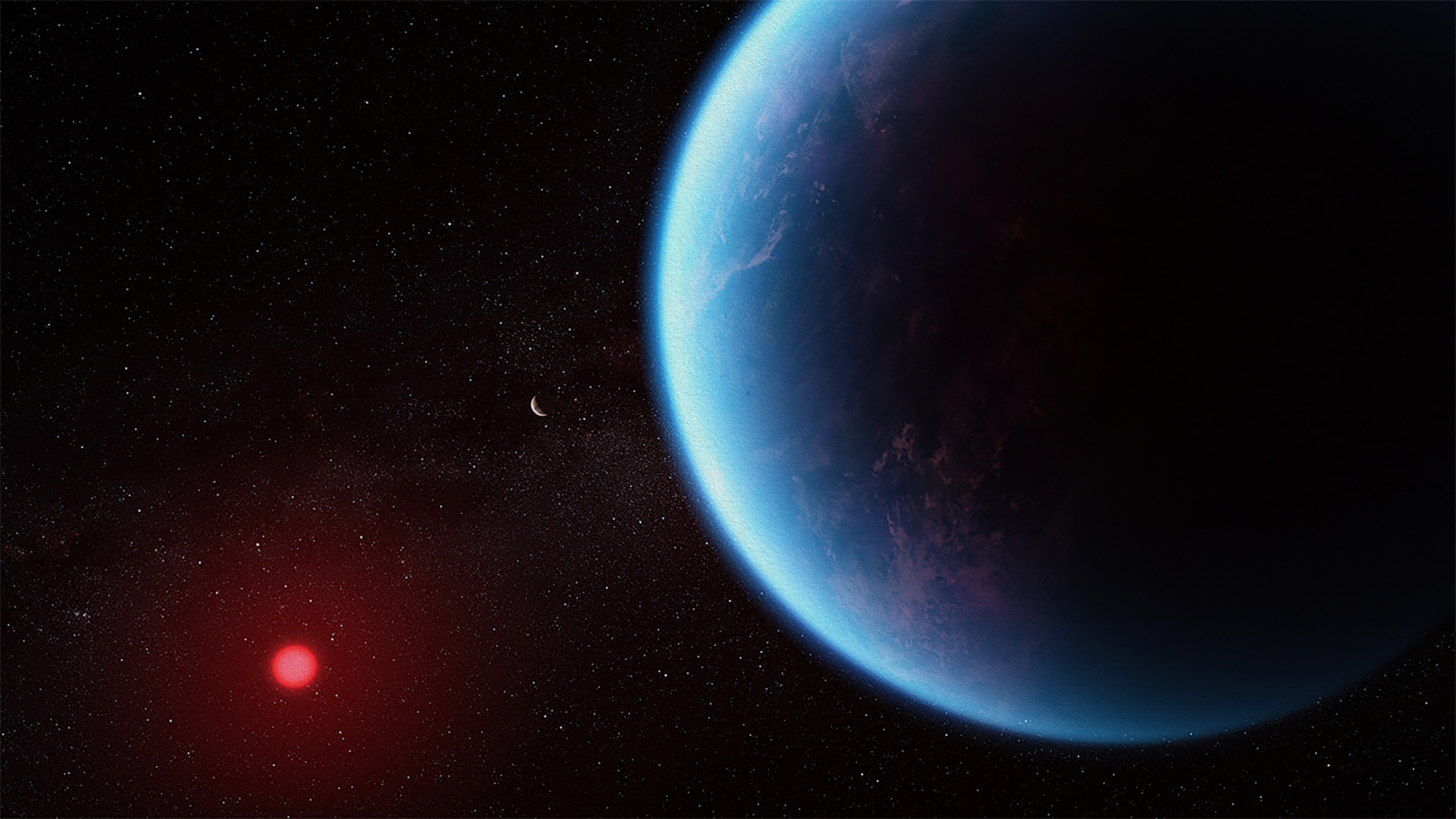Ask Ethan: Can We Send A Cassini-Like Mission To Uranus Or Neptune?

NASA’s Cassini spacecraft taught us more than we ever imagined about Saturn. Could we do something similar for Uranus and Neptune?
From where we are in the Solar System, looking out at the distant Universe with our powerful ground-based and space-based observatories has given us views and knowledge many of us never thought we’d achieve. But there’s still no substitute for actually traveling to a distant location, as dedicated missions to many of the planets have taught us. Despite all the resources we’ve devoted to planetary science, we’ve only ever sent one mission to Uranus and Neptune: Voyager 2, which only flew by them. What are our prospects for an orbiter mission to those outer worlds? That’s what our Patreon supporter Erik Jensen wants to know, as he asks:
There is a window coming when spacecraft could be sent to Uranus or Neptune using Jupiter for a gravitational boost. What are the constraints on using this but being able to slow sufficiently for entering orbit around the “ice giants”?
Let’s take a look.

The Solar System is a complicated — but thankfully, regular — place. The best way to get to the outer Solar System, which is to say, any planet beyond Jupiter, is to use Jupiter itself to help you get there. In physics, whenever you have a small object (like a spacecraft) fly by a massive, stationary one (like a star or planet), the gravitational force can change its velocity tremendously, but its speed must remain the same.
But if there’s a third object that’s gravitationally important, that story changes slightly, and in a way that’s particularly relevant for reaching the outer Solar System. A spacecraft flying by, say, a planet that’s bound to the Sun, can gain-or-lose speed by stealing-or-giving-up momentum to the planet/Sun system. The massive planet doesn’t care, but the spacecraft can get a boost (or a deceleration) depending on its trajectory.
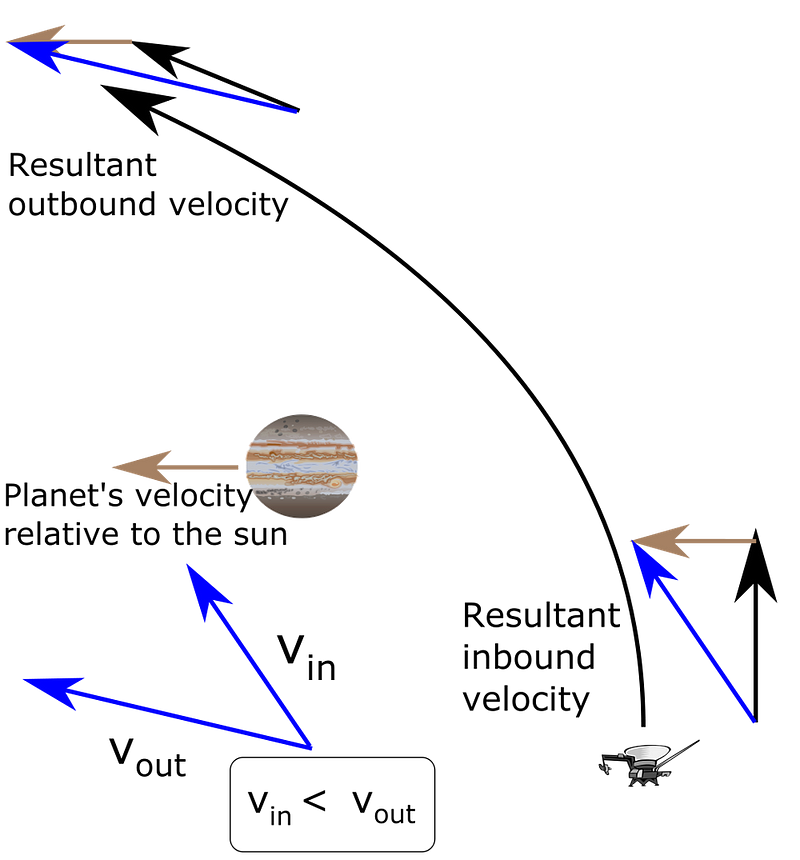
This type of maneuver is known as a gravity assist, and it was essential in getting both Voyager 1 and Voyager 2 on their way out of the Solar System, and more recently, in getting New Horizons to fly by Pluto. Even though Uranus and Neptune have spectacularly long orbital periods of 84 and 165 years, respectively, the mission windows for getting to them recur every 12 years or so: every time Jupiter completes an orbit.
A spacecraft launched from Earth typically flies by some of the inner planets a few times in preparation for a gravity assist from Jupiter. A spacecraft flying by a planet can get proverbially slingshotted — gravitational slingshot is a word for a gravity assist that boosts it — to greater speeds and energies. If we wanted to, the alignments are right that we could launch a mission to Neptune today. Uranus, being closer, is even easier to get to.
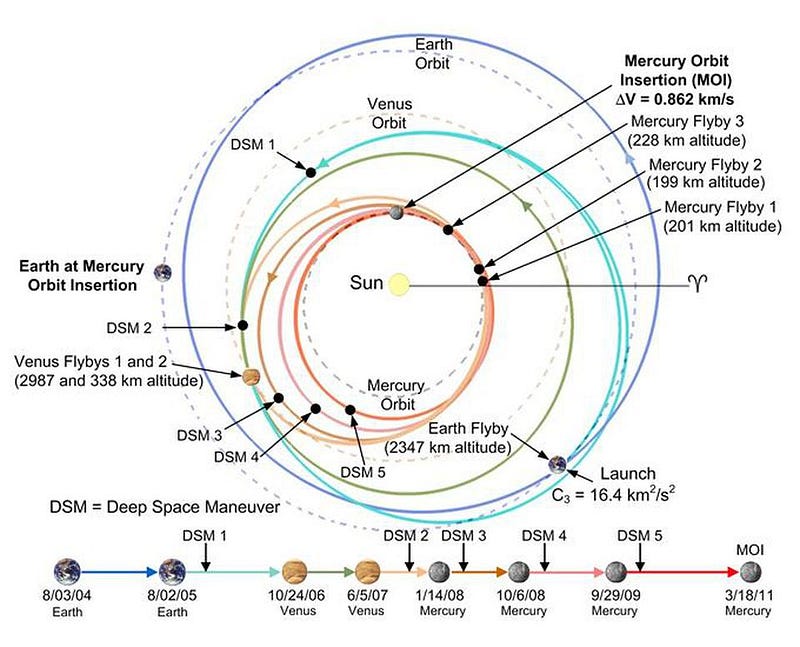
A decade ago, the Argo mission was proposed: it would fly-by Jupiter, Saturn, Neptune, and Kuiper belt objects, with a launch window lasting from 2015 to 2019. But fly-by missions are easy, because you don’t have to slow the spacecraft down. Inserting it into orbit around a world is harder, but it’s also far more rewarding.
Instead of a single pass, an orbiter can get you whole-world coverage, multiple times, over long periods of time. You can see changes in the atmosphere of a world, and examine it continuously in a wide variety of wavelengths invisible to the human eye. You can find new moons, new rings, and new phenomena that you never expected. You can even send down a lander or probe to the planet or one of its moons. All of that and more already happened around Saturn with the recently-completed Cassini mission.

Cassini didn’t just learn about the physical and atmospheric properties of Saturn, although it did that spectacularly. It didn’t just image and learn about the rings, although it did that too. What’s most incredible is that we observed changes and transient events that we never would have predicted. Saturn exhibited seasonal changes, which corresponded to chemical and color changes around its poles. A colossal storm developed on Saturn, encircling the planet and lasting for many months. Saturn’s rings were found to have intense vertical structures and to change over time; they’re dynamic and not static, and provide a laboratory to teach us about planet-and-moon formation. And, with its data, we solved old problems and discovered new mysteries about its moons Iapetus, Titan, and Enceladus, among others.
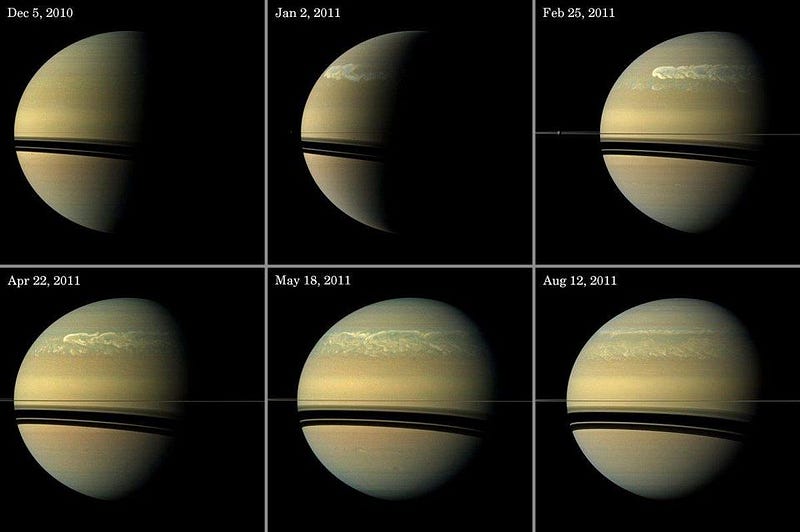
There’s little doubt we’d want to do the same for Uranus and Neptune. Many orbiting missions to Uranus and Neptune have been proposed and made it quite far in the mission submission process, but none have actually been slated to be built or fly. NASA, the ESA, JPL, and the UK have all proposed Uranus orbiters that are still in the running, but no one knows what the future holds.
So far, we’ve only studied these worlds from afar. But there is a tremendous hope for a future mission many years from now, when the launch windows to reach both worlds will align at once. In 2034, the conceptual ODINUS mission would send twin orbiters to both Uranus and Neptune simultaneously. The mission itself would be a spectacular, joint venture between NASA and the ESA.
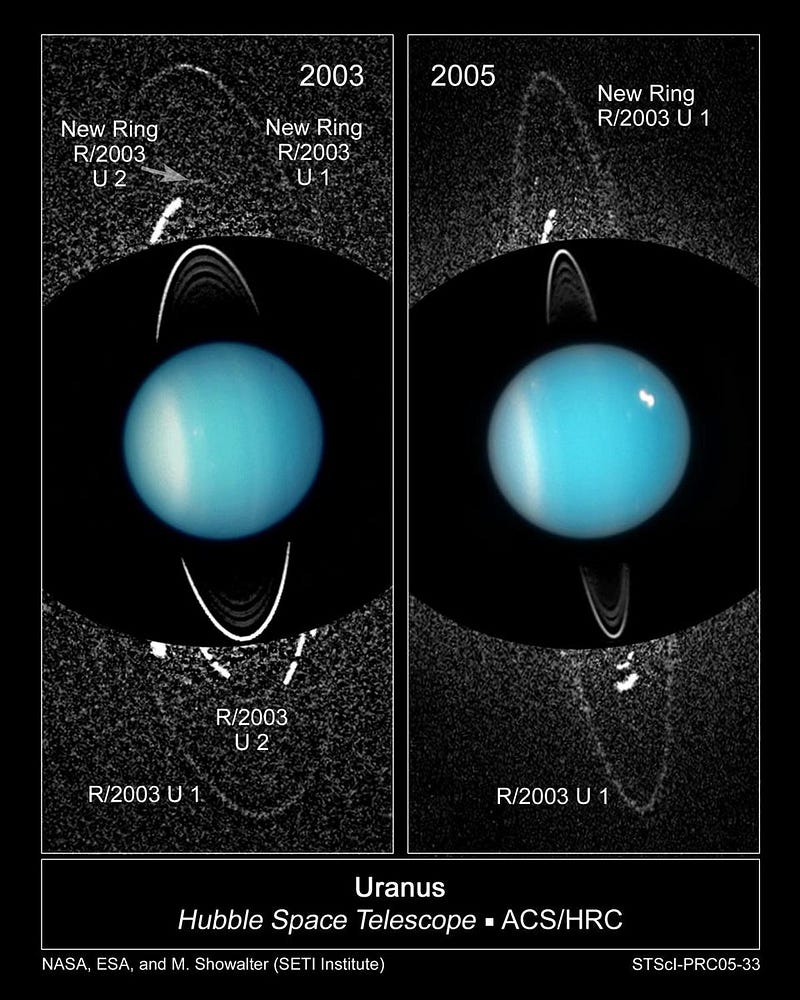
One of the major, flagship-class missions proposed to NASA’s planetary science decadal survey in 2011 was a Uranus probe and orbiter. This mission was ranked third priority, behind the Mars 2020 rover and the Europa Clipper orbiter. A Uranus probe-and-orbiter could launch during the 2020s with a window of 21 days every year: when Earth, Jupiter, and Uranus reached the optimal positions. The orbiter would have three separate instruments on it designed to image and measure various properties of Uranus, its rings, and its moons. Uranus and Neptune should have enormous liquid oceans beneath their atmospheres, and an orbiter should be able to discover it for certain. The atmospheric probe would measure cloud-forming molecules, heat distribution, and how wind speed changed with depth.
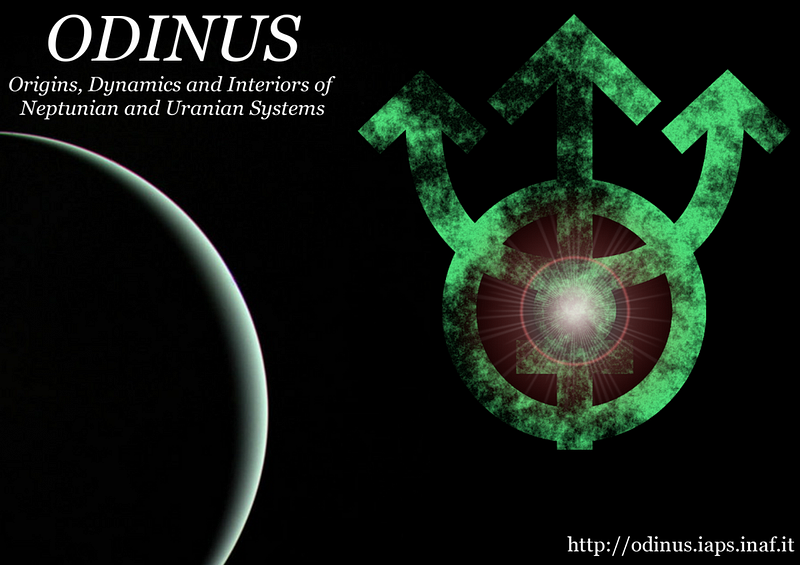
Proposed by the ESA’s Cosmic Vision program, the Origins, Dynamics, and Interiors of the Neptunian and Uranian Systems(ODINUS) mission goes even farther: expanding this concept to two twin orbiters, which would send one to Neptune and one to Uranus. A launch window in 2034, where Earth, Jupiter, Uranus, and Neptune all align properly, could send them both off simultaneously.
Flyby missions are great for first encounters, since you can learn so much about a world by seeing it up close. They’re also great because they can reach multiple targets, while orbiters are stuck at whatever world they choose to orbit. Finally, orbiters have to bring fuel on board to perform burns, slow down, and enter a stable orbit, making a mission much more expensive. But the science you get from remaining long-term around a planet, I would argue, more than makes up for it.
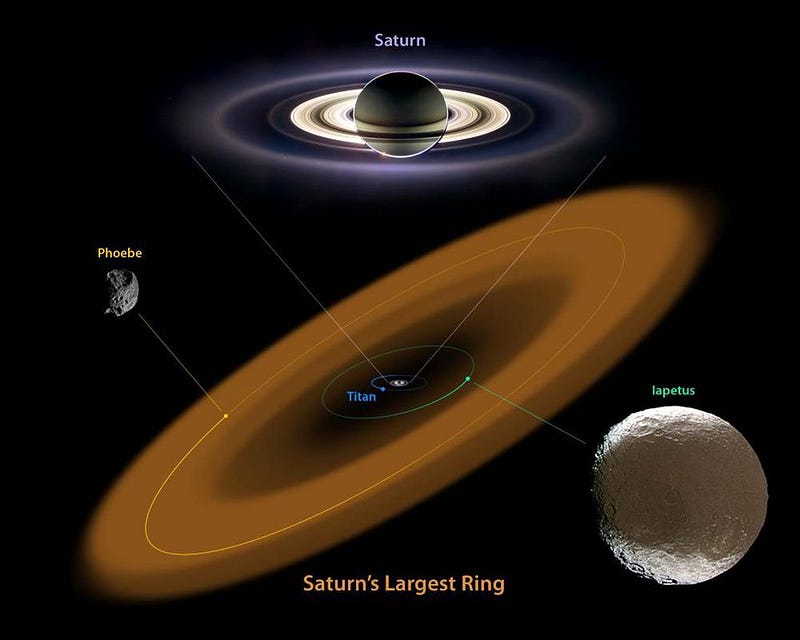
The current limitations on a mission like this don’t come from technical accomplishments; the technology exists to do it today. The difficulties are:
- Political: because NASA’s budget is finite and limited, and its resources must serve the entire community,
- Physical: because even with NASA’s new heavy lift vehicle, the uncrewed version of the SLS, we can only send a limited amount of mass to the outer solar system, and
- Practical: because at these incredible distances from the Sun, solar panels will not do. We need radioactive sources to power a spacecraft this distant, and we may not have enough to do the job.
That last one, even if everything else aligns, might be the dealbreaker.
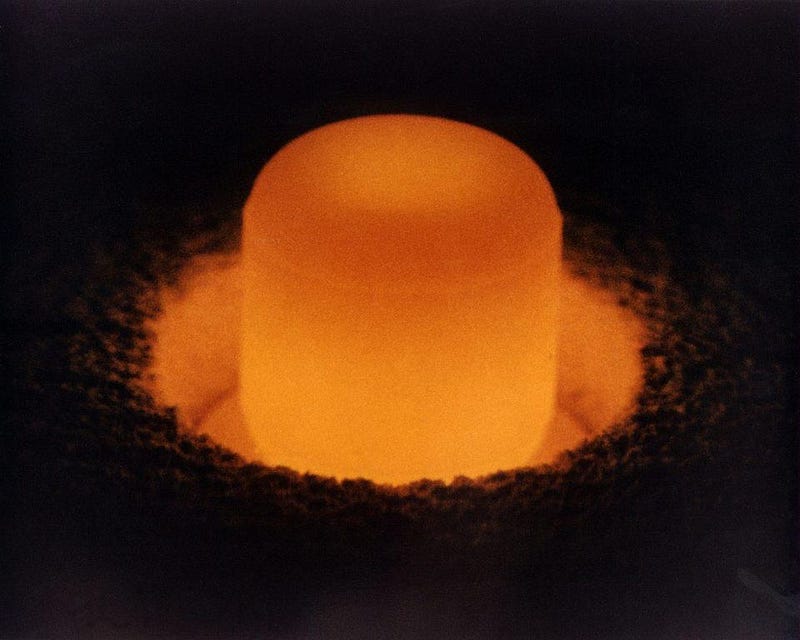
Plutonium-238 is an isotope created in the processing of nuclear material, and most of our stores of it come from a time when we were actively creating and stockpiling nuclear weapons. Its use as a radioisotope thermoelectric generator (RTG) has been spectacular for missions to the Moon, Mars, Jupiter, Saturn, Pluto and a slew of deep space probes, including the Pioneer and Voyager spacecrafts.
But we stopped producing it in 1988, and our options to purchase it from Russia have dwindled as they’ve stopped producing it, too. A recent effort to make new Pu-238 at the Oak Ridge National Laboratory has begun, producing about 2 ounces by the end of 2015. Continued development there, as well as by Ontario Power Generation, could create enough to power a mission by the 2030s.
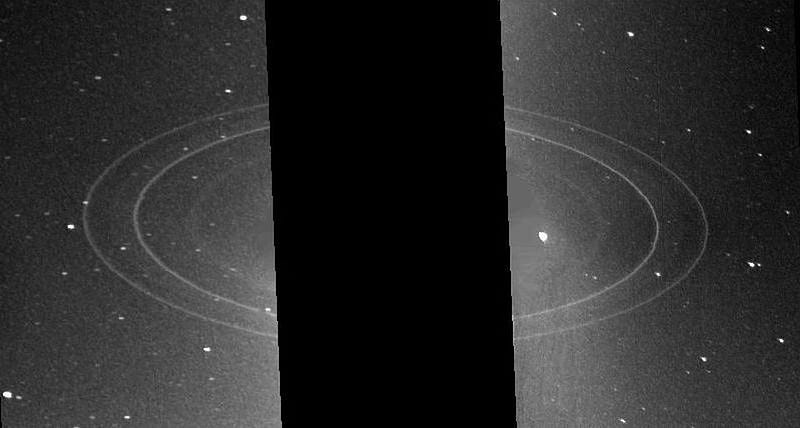
The faster you’re moving when you encounter a planet, the more fuel you need to add onto your spacecraft to slow down and insert yourself into orbit. For a mission to Pluto, there was no chance; New Horizons was too small and its speed was far too great, plus Pluto’s mass is quite low to try and do an orbital insertion. But for Neptune and Uranus, particularly if we choose the right gravity assists from Jupiter and possibly Saturn, this could be feasible. If we want to go for just Uranus, we could launch any year during the 2020s. But if we want to go for them both, which we do, 2034 is the year to go! Neptune and Uranus may look similar to us in terms of mass, temperature, and distance, but they may truly be as different as Earth is from Venus. There’s only one way to find out. With a little bit of luck, and a lot of investment and hard work, we may get to find out within our lifetimes.
Send in your Ask Ethan questions to startswithabang at gmail dot com!
(Note: Thanks to Patreon supporter Erik Jensen for asking!)
Ethan Siegel is the author of Beyond the Galaxy and Treknology. You can pre-order his third book, currently in development: the Encyclopaedia Cosmologica.


